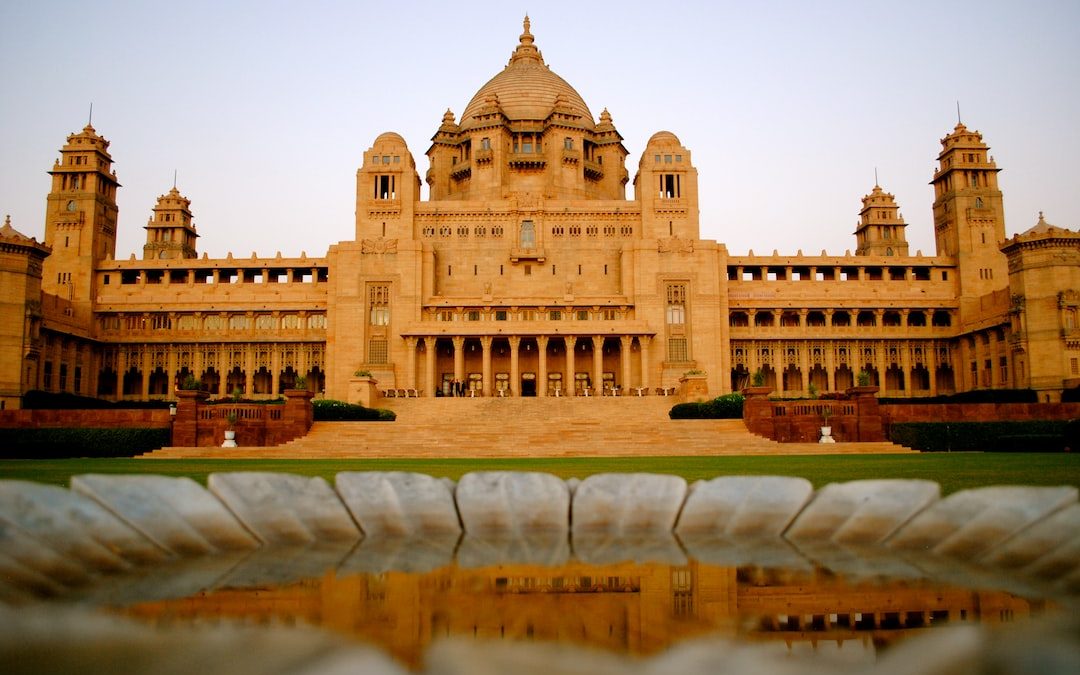Table of Contents
Exploring Jaipur’s World Heritage Sites
Jaipur, the Pink City of India, is home to a number of World Heritage Sites, making it a popular tourist destination. From the majestic forts of Amer and Jaigarh to the enthralling Hawa Mahal and the stunning temples of Galta and Govind Devji,
Jaipur has a lot to offer. In this blog post, we will explore some of the most renowned World Heritage Sites in Jaipur, and take a look at their history, architecture, and significance.
Amer Fort
Amer Fort, also known as Amber Fort, is a majestic fort situated on the outskirts of Jaipur. It was built in the late 16th century by Raja Man Singh I, a Rajput commander in the Mughal army. The fort is a perfect blend of Hindu and Mughal architecture, with the main palace being constructed using red sandstone and marble.
The fort also houses some of the finest works of Rajput art, including intricately carved marble and stone jalis, or fretwork screens, and beautiful murals. Amer Fort is not only a visual delight, but also holds immense historical significance.
Jaigarh Fort
Jaigarh Fort, also known as the ‘Victory Fort’, is situated on the top of the Aravalli Hills, overlooking the Amer Fort. It was built by Jai Singh II in 1726 to protect the Amber Fort and the city of Jaipur from attacks. The fort is known for its impregnable walls, which were constructed using red sandstone and reinforced with iron spikes.
Inside the fort, there are a number of interesting sites to explore, such as the Jaivana Cannon, the largest cannon in the world, and the armoury, which houses a collection of weapons and ammunition from the Mughal era.
Hawa Mahal
Hawa Mahal, or the ‘Palace of Winds’, is one of the most iconic monuments in Jaipur. It was built by Maharaja Sawai Pratap Singh in 1799, and is renowned for its unique architecture. The palace is built using pink sandstone in the shape of a beehive, with the exterior walls decorated with intricate carvings and latticed windows. Hawa Mahal is an important landmark in Jaipur and is a popular tourist attraction.
City Palace
The City Palace is situated in the heart of Jaipur and is a perfect example of Rajput architecture. It was built by Maharaja Sawai Jai Singh II in 1727, and is a blend of Mughal and Rajput styles. The palace complex consists of several courtyards, gardens, and temples, as well as a number of royal residences. The City Palace is a must-see for tourists, as it provides an insight into the grandeur of the Rajputs.
Jantar Mantar
Jantar Mantar is an astronomical observatory built by Maharaja Sawai Jai Singh II in the early 18th century. It consists of a number of unique instruments, such as the Samrat Yantra, which is used to measure time with great accuracy, and the Niyati Chakra, which is used to chart the stars and planets. Jantar Mantar is an important scientific landmark and a popular tourist attraction.
Galta Temple
Galta Temple, also known as the Monkey Temple, is a Hindu temple located in the outskirts of Jaipur. It was built by Raja Man Singh I in the early 17th century and is dedicated to the Sun God, Surya. The temple complex consists of a number of shrines, as well as a series of sacred ponds. Galta Temple is a popular pilgrimage site and a must-visit for tourists.
Govind Devji Temple
Govind Devji Temple, also known as the ‘Temple of Lord Krishna’, is situated in the City Palace complex. It was built by Maharaja Sawai Jai Singh II in 1735 and is dedicated to Lord Krishna. The temple is renowned for its exquisite architecture, with the interiors being decorated with beautiful murals, paintings, and carvings. The temple is a popular pilgrimage site and is a must-visit for devotees.
Albert Hall Museum
The Albert Hall Museum is situated in the Ram Niwas Garden in Jaipur. It was built by Maharaja Sawai Ram Singh II in 1887, and is the oldest museum in Rajasthan. The museum houses a large collection of artifacts and artworks, ranging from paintings and sculptures to textiles and jewelry. The Albert Hall Museum is a must-visit for tourists, as it provides an insight into the rich culture and heritage of Rajasthan.
Jal Mahal
Jal Mahal, or the ‘Water Palace’, is situated on the banks of the Man Sagar Lake in Jaipur. It was built by Maharaja Jai Singh II in the 18th century and is renowned for its stunning architecture. The palace is built of red sandstone and is decorated with intricate carvings and latticed windows. Jal Mahal is a popular tourist destination and provides a stunning view of the lake and the surrounding hills.
Nahargarh Fort
Nahargarh Fort, also known as the ‘Tiger Fort’, is situated on the Aravalli Hills overlooking Jaipur. It was built by Maharaja Sawai Jai Singh II in 1734, and is renowned for its magnificent architecture. The fort is a blend of Rajput and Mughal styles, with the exterior walls decorated with intricate carvings and latticed windows. Nahargarh Fort is a popular tourist destination and provides a stunning view of the city.
Sisodia Rani Ka Bagh
Sisodia Rani Ka Bagh, also known as the ‘Garden of Sisodia Rani’, is situated on the outskirts of Jaipur. It was built by Maharaja Sawai Jai Singh II in 1728 and is renowned for its beautiful gardens and landscaped lawns. The gardens are decorated with intricate carvings and latticed windows, and are a popular destination for tourists and locals alike.
Summary
Jaipur is home to a number of World Heritage Sites, making it a must-visit destination for tourists. From the majestic Amer and Jaigarh Forts to the enthralling Hawa Mahal and the stunning temples of Galta and Govind Devji, Jaipur has a lot to offer.
This blog post explored some of the most renowned World Heritage Sites in Jaipur, and took a look at their history, architecture, and significance. Whether you are looking for a slice of history or a visual delight, Jaipur’s World Heritage Sites are sure to provide a memorable experience.












